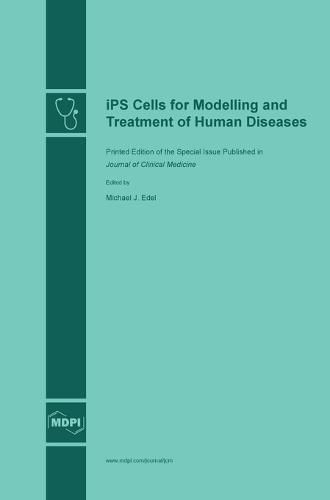Readings Newsletter
Become a Readings Member to make your shopping experience even easier.
Sign in or sign up for free!
You’re not far away from qualifying for FREE standard shipping within Australia
You’ve qualified for FREE standard shipping within Australia
The cart is loading…






This title is printed to order. This book may have been self-published. If so, we cannot guarantee the quality of the content. In the main most books will have gone through the editing process however some may not. We therefore suggest that you be aware of this before ordering this book. If in doubt check either the author or publisher’s details as we are unable to accept any returns unless they are faulty. Please contact us if you have any questions.
The field of reprogramming somatic cells into induced pluripotent stem cells (iPSC) has moved very quickly, from bench to bedside in just eight years since its first discovery. The best example of this is the RIKEN clinical trial this year in Japan, which will use iPSC derived retinal pigmented epithelial (RPE) cells to treat macular degeneration (MD). This is the first human disease to be tested for regeneration and repair by iPSC-derived cells and others will follow in the near future. Currently, there is an intense worldwide research effort to bring stem cell technology to the clinic for application to treat human diseases and pathologies. Human tissue diseases (including those of the lung, heart, brain, spinal cord, and muscles) drive organ bioengineering to the forefront of technology concerning cell replacement therapy. Given the critical mass of research and translational work being performed, iPSCs may very well be the cell type of choice for regenerative medicine in the future. Also, basic science questions, such as efficient differentiation protocols to the correct cell type for regenerating human tissues, the immune response of iPSC replacement therapy and genetic stability of iPSC-derived cells, are currently being investigated for future clinical applications.
$9.00 standard shipping within Australia
FREE standard shipping within Australia for orders over $100.00
Express & International shipping calculated at checkout
This title is printed to order. This book may have been self-published. If so, we cannot guarantee the quality of the content. In the main most books will have gone through the editing process however some may not. We therefore suggest that you be aware of this before ordering this book. If in doubt check either the author or publisher’s details as we are unable to accept any returns unless they are faulty. Please contact us if you have any questions.
The field of reprogramming somatic cells into induced pluripotent stem cells (iPSC) has moved very quickly, from bench to bedside in just eight years since its first discovery. The best example of this is the RIKEN clinical trial this year in Japan, which will use iPSC derived retinal pigmented epithelial (RPE) cells to treat macular degeneration (MD). This is the first human disease to be tested for regeneration and repair by iPSC-derived cells and others will follow in the near future. Currently, there is an intense worldwide research effort to bring stem cell technology to the clinic for application to treat human diseases and pathologies. Human tissue diseases (including those of the lung, heart, brain, spinal cord, and muscles) drive organ bioengineering to the forefront of technology concerning cell replacement therapy. Given the critical mass of research and translational work being performed, iPSCs may very well be the cell type of choice for regenerative medicine in the future. Also, basic science questions, such as efficient differentiation protocols to the correct cell type for regenerating human tissues, the immune response of iPSC replacement therapy and genetic stability of iPSC-derived cells, are currently being investigated for future clinical applications.